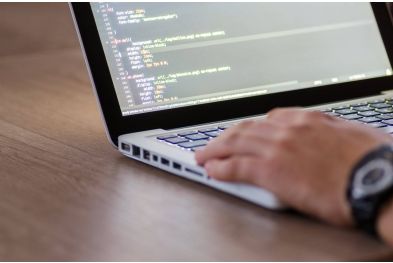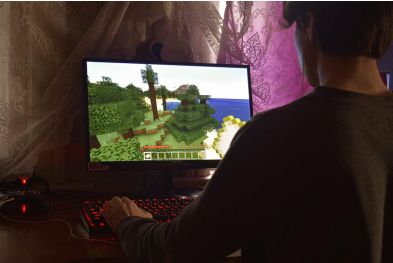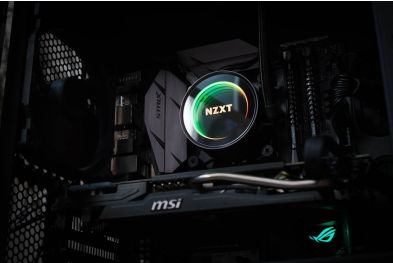How to Lower Your PC’s Temperature and Prevent Overheating
Overheating is a common issue that can lead to reduced performance, hardware damage, and even system crashes. Whether you’re gaming, editing videos, or just browsing the web, keeping your PC cool is essential for optimal performance and longevity. In this guide, we’ll explore practical ways to reduce your PC’s temperature and prevent overheating.
Why is Overheating a Problem?
When your PC overheats, it can cause:
Performance Throttling: Your CPU and GPU may slow down to prevent damage, reducing performance.
Hardware Damage: Prolonged exposure to high temperatures can shorten the lifespan of your components.
System Crashes: Overheating can cause your PC to freeze, crash, or shut down unexpectedly.
To avoid these issues, it’s crucial to keep your PC’s temperature within safe limits.
How to Monitor Your PC’s Temperature
Before taking steps to reduce your PC’s temperature, you need to monitor it. Use these tools to check your system’s temperature:
HWMonitor: Tracks temperatures for your CPU, GPU, and other components.
MSI Afterburner: Monitors GPU temperature and performance.
Core Temp: Focuses on CPU temperature.
Ideal temperature ranges:
CPU: Below 80°C under load.
GPU: Below 85°C under load.
Tips to Reduce Your PC’s Temperature
1. Improve Airflow in Your Case
Good airflow is essential for keeping your PC cool. Here’s how to optimize it:
Arrange Fans Properly: Use intake fans at the front/bottom and exhaust fans at the rear/top.
Remove Obstructions: Ensure cables and components don’t block airflow.
Clean Dust Filters: Dust buildup restricts airflow, so clean your case’s dust filters regularly.
2. Upgrade Your Cooling System
If your PC is still running hot, consider upgrading your cooling solution:
Air Cooling: Invest in a high-quality CPU cooler with larger heatsinks and better fans.
Liquid Cooling: All-in-one (AIO) liquid coolers are more efficient at dissipating heat.
Case Fans: Add more fans or upgrade to higher-performance models.
3. Apply Thermal Paste Correctly
Thermal paste improves heat transfer between your CPU and cooler. If your CPU is overheating, try reapplying thermal paste:
Clean off the old paste with isopropyl alcohol.
Apply a pea-sized amount of new thermal paste to the CPU.
Reattach the cooler evenly to avoid air bubbles.
4. Manage Cable Clutter
Poor cable management can obstruct airflow and trap heat. Use zip ties or Velcro straps to organize cables and keep them out of the way.
5. Optimize Fan Curves
Adjust your fan speeds to balance cooling and noise:
Use your motherboard’s BIOS or software like MSI Afterburner to create custom fan curves.
Increase fan speeds at higher temperatures for better cooling.
6. Keep Your PC Clean
Dust buildup can clog fans and vents, reducing cooling efficiency. Regularly clean your PC:
Use compressed air to remove dust from fans, heatsinks, and vents.
Clean the exterior of your case to prevent dust from entering.
7. Avoid Overclocking
Overclocking increases heat output. If your PC is overheating, revert to stock clock speeds or reduce overclocking settings.
8. Improve Room Ventilation
Your PC’s environment plays a role in its temperature:
Keep your PC in a well-ventilated area.
Avoid placing it near heat sources like radiators or direct sunlight.
Use air conditioning or fans to lower room temperature.
9. Upgrade Your Hardware
Older or low-quality components may generate more heat. Consider upgrading:
Case: Choose a case with better airflow and cooling options.
Power Supply: A high-quality PSU with efficient cooling can reduce heat.
Components: Newer CPUs and GPUs are often more power-efficient and generate less heat.
10. Use Software to Reduce Load
Some software can help reduce your PC’s workload and heat output:
Close Background Apps: Use Task Manager to end unnecessary processes.
Enable Power-Saving Modes: Reduce CPU and GPU usage when not performing demanding tasks.
Update Drivers: Ensure your hardware drivers are up to date for optimal performance.
Signs Your PC is Overheating
Watch for these warning signs:
Loud Fan Noise: Fans running at high speeds indicate your system is struggling to cool down.
Frequent Crashes: Overheating can cause your PC to freeze or shut down unexpectedly.
Performance Drops: Slower performance or stuttering during tasks may be due to thermal throttling.
Hot Air Exhaust: If the air coming from your PC feels excessively hot, it’s a sign of overheating.
Final Thoughts
Keeping your PC cool is essential for maintaining performance and extending the lifespan of your components. By improving airflow, upgrading your cooling system, and regularly cleaning your PC, you can effectively reduce temperatures and prevent overheating.
Remember, every PC is different, so experiment with these tips to find what works best for your setup. A cooler PC means a smoother, more reliable experience for gaming, work, or everyday use.
Reminder:
Found this guide helpful? Share it with your friends and fellow PC enthusiasts on social media! Let’s help everyone keep their systems cool and running efficiently. 🚀
By following these steps, you’ll be able to lower your PC’s temperature and avoid overheating, ensuring your system stays cool and performs at its best. Happy computing!







